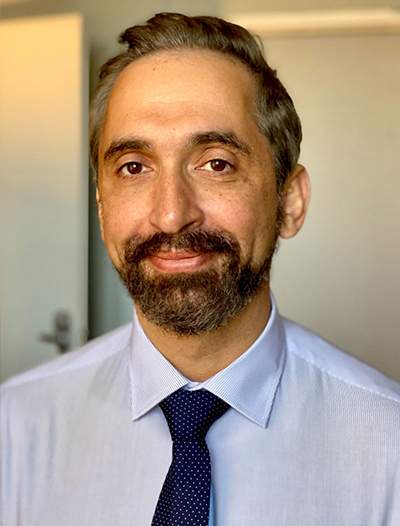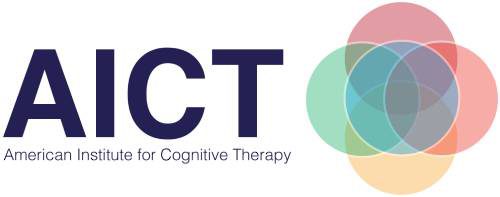Obsessive Compulsive Disorder
What are Obsessive Compulsive Disorder (OCD) thoughts?
Studies show most people have “OCD” thoughts. Many people have thoughts about making mistakes, contamination, unfinished tasks, sexual fantasies, or thoughts about unwanted impulses. But people with OCD find these thoughts more upsetting and they respond more strongly to these thoughts. Disturbing thoughts go against the OCD client’s beliefs and values. For example, a very religious man may fear he will commit blasphemy. A loving mother may fear harming her child.
People with OCD try to avoid these thoughts or force them out of their mind with tricks. These tricks provide short term relief. So, the OCD patient continues having these thoughts and trying to control them without success. Over time the thoughts gain strength and recur more often. Rituals can grow to take over their lives.
OCD patients often have specific beliefs about their intrusions. These beliefs may include the following:
- “I need to stop this thought right now”
- “If this thought doesn’t stop, I will lose control”
- “If I have this thought again, something terrible will happen”
- “These thoughts show that I am evil”
- “No one else thinks like this”
- “If this thought doesn’t go away immediately, there must be something wrong with me.”
Many of these beliefs are what we call “fusion metacognitions.” Metacognitions are thoughts about your thoughts. People with OCD are continually scanning their thoughts and evaluating them. There are several components to this.
1. Thought action fusion – The belief that a bad thought will make one perform an awful behavior. OCD patients may view thoughts and behaviors as moral equivalents. “The thought of pushing someone into the subway, means I will do it.” Or “Having that thought makes me an awful person, even if I don’t do it.”
2. Thought event fusion – The belief that a thought will cause external events to occur. “Thinking about a homeless person means I will lose all my money.”
3. Thought object fusion – The belief that thoughts and feelings transfer between objects. (“If I touch that door handle, the next person who touches it will become contaminated.”)
How Does Cognitive-Behavioral Treatment for OCD Work?
OCD clients may believe that compulsions keep them sane. They believe that they can’t stand skipping compulsions. They think that they will get more and more anxious and they often worry that they might go crazy.
Clients learn to manage anxiety without compulsions. They learn that they can face their fears and feel better. They learn they don’t need to engage with their thoughts. This may be hard to believe, but it’s true. The process is gradual. Treatment may take longer for people with severe symptoms.
How Effective Is Cognitive-Behavioral Treatment For OCD?
One review examined 16 CBT treatment studies for OCD (Olatunji et al., 2013). Participants’ showed large symptom improvements. Improvements to treatment may include:
- Less distress to intrusions
- Less time spent on intrusions
- Less time devoted to rituals
- More freedom to enjoy activities in personal and professional life
AICT staff who specialize in OCD treatment
 Nicholas Demas, Ph.D., is a New York State licensed psychologist with a broad range of experience in cognitive behavioral therapy (CBT), acceptance and commitment therapy (ACT), and dialectical behavior therapy (DBT). He specializes in working with adults with PTSD, anxiety, mood, and personality disorders, and has extensive experience treating OCD and depression. Dr. Demas is a national certified Provider of Cognitive Processing Therapy for PTSD. Dr. Demas received his Ph.D. in Clinical Psychology from Hofstra University. Following his initial externship at AICT, he worked with inpatients diagnosed with severe Schizophrenia, Schizoaffective Disorder, and comorbid substance abuse at Creedmoor Psychiatric Center. Dr. Demas completed his pre-doctoral internship at Waianae Coast Comprehensive Health Center, a federally designated facility that provides behavioral health treatment to the medically underserved and demographically diverse communities in the Leeward and Central regions of Oahu. Dr. Demas then completed a one-year postdoctoral residency the Honolulu VA, where he worked exclusively with Combat Veterans and Service Members diagnosed with PTSD, and specialized in providing Cognitive Processing Therapy (CPT) and Prolonged Exposure Therapy (PE). Dr. Demas also provided Trauma-Informed Guilt Reduction (TrIGR) group therapy to residential patients, and conducted a study that explored the effects of guilt and shame on PTSD symptom severity.
Nicholas Demas, Ph.D., is a New York State licensed psychologist with a broad range of experience in cognitive behavioral therapy (CBT), acceptance and commitment therapy (ACT), and dialectical behavior therapy (DBT). He specializes in working with adults with PTSD, anxiety, mood, and personality disorders, and has extensive experience treating OCD and depression. Dr. Demas is a national certified Provider of Cognitive Processing Therapy for PTSD. Dr. Demas received his Ph.D. in Clinical Psychology from Hofstra University. Following his initial externship at AICT, he worked with inpatients diagnosed with severe Schizophrenia, Schizoaffective Disorder, and comorbid substance abuse at Creedmoor Psychiatric Center. Dr. Demas completed his pre-doctoral internship at Waianae Coast Comprehensive Health Center, a federally designated facility that provides behavioral health treatment to the medically underserved and demographically diverse communities in the Leeward and Central regions of Oahu. Dr. Demas then completed a one-year postdoctoral residency the Honolulu VA, where he worked exclusively with Combat Veterans and Service Members diagnosed with PTSD, and specialized in providing Cognitive Processing Therapy (CPT) and Prolonged Exposure Therapy (PE). Dr. Demas also provided Trauma-Informed Guilt Reduction (TrIGR) group therapy to residential patients, and conducted a study that explored the effects of guilt and shame on PTSD symptom severity.
 Melissa D. Horowitz, PsyD., is a New York State licensed psychologist with extensive experience in cognitive behavior therapy (CBT), dialectical behavior therapy (DBT), social problem-solving, motivational interviewing and mindfulness-based approaches. She works with adolescents, college students, adults and families. Dr. Horowitz specializes in the treatment of eating disorders (binge eating disorder, bulimia, anorexia) and body-image and weight-management issues in both men and women. She also specializes in the treatment of mood disorders (depression, bipolar disorder), anxiety disorders (generalized anxiety, social anxiety, separation anxiety, panic disorder, phobias), and obsessive compulsive and related disorders (trichotillomania, skin-picking, body-dysmorphic disorder). Additional areas of expertise include insomnia, grief, procrastination, perfectionism, substance abuse, personality disorders and chronic health issues. Dr. Horowitz has been intensively trained in working with individuals struggling with regulating their emotions, impulsivity, poor problem-solving skills, interpersonal conflicts and self-injury.
Melissa D. Horowitz, PsyD., is a New York State licensed psychologist with extensive experience in cognitive behavior therapy (CBT), dialectical behavior therapy (DBT), social problem-solving, motivational interviewing and mindfulness-based approaches. She works with adolescents, college students, adults and families. Dr. Horowitz specializes in the treatment of eating disorders (binge eating disorder, bulimia, anorexia) and body-image and weight-management issues in both men and women. She also specializes in the treatment of mood disorders (depression, bipolar disorder), anxiety disorders (generalized anxiety, social anxiety, separation anxiety, panic disorder, phobias), and obsessive compulsive and related disorders (trichotillomania, skin-picking, body-dysmorphic disorder). Additional areas of expertise include insomnia, grief, procrastination, perfectionism, substance abuse, personality disorders and chronic health issues. Dr. Horowitz has been intensively trained in working with individuals struggling with regulating their emotions, impulsivity, poor problem-solving skills, interpersonal conflicts and self-injury.
 Kathleen Mattran Taylor, Ph.D., is a licensed psychologist in New York, Connecticut, and Florida. She is committed to providing a supportive and collaborative therapeutic experience with a foundation of evidence-based therapies. She focuses on helping individuals make lasting and meaningful changes to reduce the distress of mental health problems and improve overall well-being. Dr. Taylor works with people suffering from anxiety, mood disorders, trauma, and borderline personality disorder. Dr. Taylor provides cognitive processing therapy (CPT), prolonged exposure therapy (PE), and dialectical behavior therapy – prolonged exposure protocol (DBT-PE) for the treatment of PTSD, and PTSD with co-occurring substance use disorders. Dr. Taylor is also well-versed in both cognitive behavioral therapy (CBT) and dialectical behavior therapy (DBT), for the treatment of borderline personality disorder, and to help people struggling with their emotions. Dr. Taylor also provides therapy for couples in crisis, helping them improve communication and strengthen their connection using the Gottman method.
Kathleen Mattran Taylor, Ph.D., is a licensed psychologist in New York, Connecticut, and Florida. She is committed to providing a supportive and collaborative therapeutic experience with a foundation of evidence-based therapies. She focuses on helping individuals make lasting and meaningful changes to reduce the distress of mental health problems and improve overall well-being. Dr. Taylor works with people suffering from anxiety, mood disorders, trauma, and borderline personality disorder. Dr. Taylor provides cognitive processing therapy (CPT), prolonged exposure therapy (PE), and dialectical behavior therapy – prolonged exposure protocol (DBT-PE) for the treatment of PTSD, and PTSD with co-occurring substance use disorders. Dr. Taylor is also well-versed in both cognitive behavioral therapy (CBT) and dialectical behavior therapy (DBT), for the treatment of borderline personality disorder, and to help people struggling with their emotions. Dr. Taylor also provides therapy for couples in crisis, helping them improve communication and strengthen their connection using the Gottman method.
the highest quality
cognitive-behavioral
treatment”
Medications for OCD
Many people use medications to assist in their OCD treatment. Some OCD medications increase levels of the chemical serotonin in the brain. Studies have shown that medication alone can improve symptoms. But these symptoms often return after a client discontinues medication. The key component of Cognitive Behavioral Treatment is to give you the skills to cope more effectively.
Resources
International OCD Foundation
(http://www.ocfoundation.org/)
Anxiety and Depression Association of America
(http://www.adaa.org/understanding-anxiety/obsessive-compulsive-disorder-ocd)
Fictional OCD example
Bill reports intrusive thoughts. He sees gruesome pictures in his mind. He feels anxious. The pictures include loved ones. He sees them 20 times each day.
Bill wants to clear thoughts. He counts even numbers to 20. Sometimes one round clears thoughts. It may take many rounds. It may take 2 hours to feel calm. But the ritual works eventually.
When he sees his daughter, the thoughts return. He tries to dismiss them. He remains distracted. Then he excuses himself to count again. He decides there must be another way.
Bill makes a CBT appointment. He describes habits of many years. Bill began counting to reduce anxiety. First he counted just a few numbers. That neutralized the thoughts. Then he counted more over time.
The therapist gives him information on OCD. Bill’s strategy made sense. Counting gave short term relief. But long term it made things worse.
It took more time. It took more effort. It crowded out important things. He wasn’t present with family. He avoided people to manage thoughts. He spent hours in distracting activities.
His response strengthened these negative beliefs.
- “I can’t handle anxiety.”
- “I must attend to thoughts.”
- “I must control thoughts.”
- “I can’t trust myself”
- “Thinking is the same as doing”
The therapist taught him different responses.
Bill started by adjusting counting. He counted odd numbers. Then he counted at different times. He counted only once a day. He deliberately brought up thoughts. This time he did nothing in response. His fear was intense, but he tolerated it.
He also examined his beliefs about thoughts. They didn’t need to be controlled. Bill learned he can let thoughts run. He learned he can tolerate anxiety. And he could focus with his daughter.
